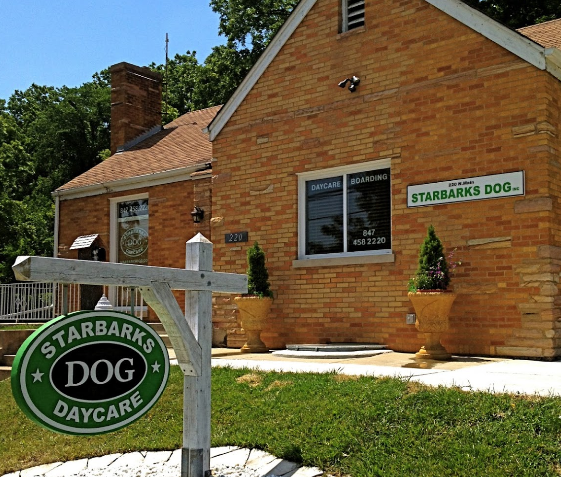Are you looking to protect a unique phrase that represents your brand’s identity? Understanding how to trademark a phrase is key to securing your intellectual property rights and preventing others from profiting off your creativity.
This article serves as a practical guide to navigate the trademark registration process, from ensuring your phrase is eligible for protection, to filing the necessary paperwork and maintaining your trademark rights.
Get ready to take concrete steps towards trademarking your phrase and cementing your market presence!
Key Takeaways
- Trademarking a phrase is essential for protecting your brand’s unique market identity and should be distinctive, non-descriptive, and associated with your goods or services to meet eligibility criteria.
- Before applying, conduct a comprehensive trademark search using the USPTO’s Trademark Electronic Search System (TESS) to ensure your phrase isn’t already in use or registered, and choose the correct class, write a clear description, and select the proper filing basis for your application.
- Working with a trademark attorney can help navigate the complexities of the trademark process, respond correctly (and timely) to USPTO office actions, and maintain and enforce trademark rights, especially when seeking international trademark protection.
Understanding the Importance of Trademarking a Phrase
Picture this scenario…
You’ve spent countless hours brainstorming a catchy phrase that encapsulates your brand’s mission and vision. Suddenly, a competitor swoops in and starts using that very phrase in their marketing efforts. You’re left watching helplessly as they reap the benefits of your hard work.
This is where the magic of a trademarked phrase comes into play, serving as a shield against such scenarios and helping to maintain your unique market and brand identity. By securing a phrase trademark, you can protect your brand and prevent competitors from profiting off your creativity.
A phrase associated with your business plays a pivotal role in developing brand recognition. By undergoing the federal trademark registration process, you can assert your trademark rights, making it easier to enforce them should the need arise.
However, it’s essential to understand and adhere to federal trademark rules to ensure a smooth registration process. Without formal registration, your common law trademark rights might not offer adequate protection.
Thus, it’s clear that the journey to trademark a phrase begins with understanding its importance and the protection it provides in the realm of intellectual property.
Eligibility Criteria for Trademarking a Phrase
While it might be tempting to rush to the trademark office to trademark a phrase, it’s crucial to first ensure that your phrase meets the eligibility criteria for trademark protection. These criteria serve as a litmus test, determining whether a phrase can successfully navigate the trademark registration process.
Uniqueness and Distinctiveness
A phrase’s uniqueness and distinctiveness are the cornerstones of a successful trademark application. But what does this mean in practice?
Essentially, your phrase needs to be one of a kind – something that, when heard or seen, immediately brings your brand to mind.
But navigating the intricacies of distinctiveness can be complex.
For instance, a phrase’s distinctiveness may vary based on its usage within different business contexts, impacting the likelihood of a successful trademark registration.
At this juncture, the guidance of an experienced trademark lawyer can be invaluable. They can provide expert legal advice, helping you understand the potential suitability of your phrase for trademark registration.
Non-Descriptive Nature
While it might be tempting to select a phrase that directly describes your product or service, such phrases are generally not eligible for trademark registration. This can be a challenging concept to grasp, as one might intuitively want a phrase that explicitly communicates what their business offers.
However, phrases that form part of everyday language or that are primarily descriptive of the goods or services they relate to are typically not granted trademark protection. We see this with our trademark clients all the time.
For instance, phrases that indicate support for a national movement are not eligible for trademark protection (i.e consider the numerous examples of people trying to profit off of the phrase “black lives matter”, which were all quickly rejected).
Therefore, it is crucial to ensure that your phrase is non-descriptive and unique to stand a better chance of success in the trademark registration process.
Association with Goods or Services
Your phrase’s eligibility for trademark protection is also tied to its association with goods or services.
Simply put, the phrase must be tied to the sale of goods or services in a commercial context. It’s not enough to merely describe your goods or services; it must serve the function of indicating the original source of these goods or services to be eligible for trademark protection.
In essence, your phrase needs to be more than just a catchy tagline on your website; it needs to be a clear source indicator of your brand’s identity in the marketplace. By ensuring this association, you enhance your chances of achieving a successful trademark registration and gaining robust brand recognition.
Conducting a Comprehensive Trademark Search
Having ensured that your phrase meets the eligibility criteria, you might be itching to proceed with your trademark application.
But hold your horses!
Before you embark on this journey, it’s crucial to conduct a comprehensive trademark search. This step ensures that your phrase isn’t already in use or registered by another party, helping you avoid potential legal issues down the line.
Embarking on this search might seem daunting, but fear not – the United States Patent and Trademark Office (USPTO) has your back. Their Trademark Electronic Search System (TESS) should be your first stop, allowing you to check if your phrase is already registered.
And don’t forget, trademark lawyers can be invaluable allies in conducting this search, ensuring that your chosen phrase isn’t already registered for similar products or services and that it is indeed eligible for trademarking.
Filing Your Trademark Application
With a clean bill of health from your comprehensive trademark search, you’re now ready to file your trademark application. But how do you navigate this process?
Let’s delve deeper into the steps involved. Understanding trademark laws is crucial for navigating the complexities of the trademark registration process, including seeking protection in multiple countries and maintaining the trademark.
Choosing the Right Class
When filing your trademark application, it’s crucial to select the appropriate class for your goods or services. This might seem like a minor detail, but its importance cannot be overstated. The classification of a trademark provides insight into the type of goods or services it pertains to, and selecting the correct class is crucial for accurate representation.
Choosing the incorrect class can lead to an outright rejection of your application or a forfeiture of filing fees. Therefore, it’s worth spending some time researching the classes relevant to your business, or better yet, consulting with a trademark lawyer to ensure an accurate selection.
One of the biggest value adds we provide to our client's is to help them construct proper descriptions and make sure they choose the correct international classes for their trademark applications.
Filing Basis: Use in Commerce vs. Intent to Use
Another crucial aspect of your trademark application is selecting the appropriate filing basis. This could either be actual use in commerce (a Section 1(a) filing basis) or an intent to use the mark in the future (Section 1(b) filing basis).
But what does this mean in practice?
If you’re already using your phrase in commerce, your application would be based on actual use. Conversely, if you’ve not yet used your phrase but intend to in the future, your application would be based on intent to use. This allows you to reserve the phrase ahead of expending time and money in marketing efforts.
Working with a Trademark Attorney
Navigating the trademark process can be complex, with numerous potential pitfalls. One way to streamline this process and ensure a smooth journey is by consulting with a trademark attorney.
With their deep understanding of the trademark registration process and legal expertise, a trademark attorney can offer invaluable guidance for trademark owners.
From assessing the distinctiveness of your phrase, helping you navigate the application process, to avoiding application mistakes that could lead to delays or rejections – a trademark attorney can be your trusted ally.
Especially for businesses seeking international trademark protection, a trademark attorney can guide you through the complex international filing requirements.
Responding to USPTO Office Actions and Communications
After you’ve filed your trademark application, you’ll need to stay vigilant for communications from the USPTO. These communications, also known as office actions, will require timely responses to ensure a smooth registration process.
There are various types of office actions, each with its own deadlines and requirements. For example, a non-final office action must be responded to within three months, with an extension possible for a fee of $125 as of this writing. Other communications, like a suspension letter, might not require an immediate response but are crucial to be aware of as they inform you about the status of your trademark application.
Maintaining and Enforcing Your Trademark Rights
With your trademark successfully registered, your journey to brand protection is just beginning. It’s essential to maintain and enforce your trademark rights on a continual basis. This means regularly demonstrating your trademark’s use in commerce and filing required maintenance documents at specified intervals.
Moreover, enforcing your trademark rights with regards to potential infringers is crucial to preventing trademark infringement or even “generocide”.
If you notice another business using your trademarked phrase, consulting with a trademark attorney well-versed in trademark law can aid in taking appropriate legal action. Remember, a trademark is not just a legal certificate; it’s a shield protecting your brand’s reputation and identity.
If you don't police it, you could lose it.
International Trademark Protection
As your business scales and crosses borders, your trademark protection might need to follow suit. International trademark protection can be achieved through the Madrid System, a one-stop solution for registering and managing trademarks worldwide.
However, international trademark registration involves complex filing requirements and legal procedures. An international trademark attorney can offer valuable guidance and support in this process, ensuring your trademark enjoys legal protection beyond the confines of your home country.
Common Mistakes to Avoid When Trademarking a Phrase
As we’ve journeyed through the trademarking process, we’ve uncovered various potential pitfalls. Avoiding these common mistakes can help ensure a smooth trademark registration process.
For example, focusing too much on a phrase’s ornamental use could lead to refusal of your trademark application. Similarly, not conducting a comprehensive trademark search or neglecting to consult a trademark attorney early in the process can also lead to delays or rejections of your trademark application.
By being aware of these common mistakes, you’re better equipped to navigate the trademarking process with confidence.
Summary
Trademarking a phrase is a journey filled with intricacies and potential pitfalls. From understanding the importance of trademarking a phrase, navigating eligibility criteria, conducting a comprehensive trademark search, to filing a trademark application and maintaining your registered trademark – each step is crucial.
With the right knowledge and expert guidance from a trademark attorney, you can protect your brand’s unique identity, safeguard your intellectual property, and set your business up for success.
Frequently Asked Questions
Why is it important to trademark a phrase?
Trademarking a phrase is important because it protects your brand's identity, prevents competitors from using your phrase in commerce, and contributes to brand recognition.
What is the eligibility criteria for trademarking a phrase?
To be eligible for trademarking a phrase, it must be unique, non-descriptive, and used or intended for use in commerce related to your specified goods or services.
How do I conduct a comprehensive trademark search?
To conduct a comprehensive trademark search, use the USPTO's TESS system or seek assistance from a trademark attorney. This will help you check if your phrase is already registered or is likely to cause confusion with an existing registration.
What is the role of a trademark attorney in the trademarking process?
A trademark attorney plays a crucial role in providing legal advice, guiding through the application process, and taking legal action against infringement to ensure the successful trademarking process.
What are some common mistakes to avoid when trademarking a phrase?
When trademarking a phrase, it's important to avoid focusing solely on its ornamental use, not conducting a thorough trademark search, and not seeking advice from a trademark attorney. Be mindful of these common mistakes to ensure a successful trademark registration.



